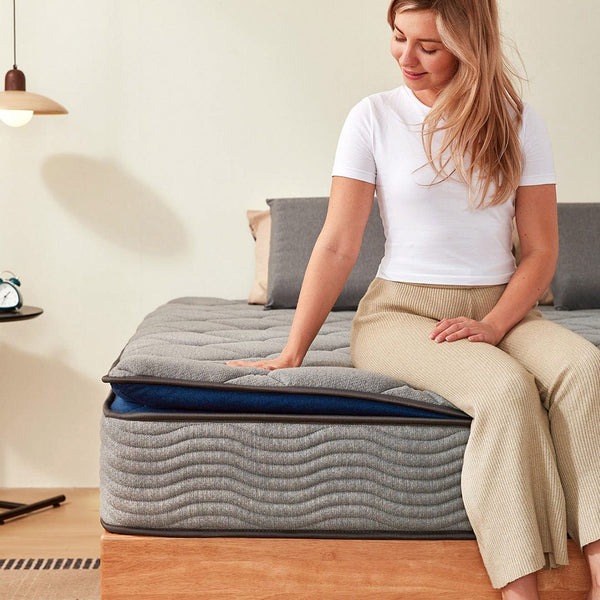Let’s look at the bed frame first
It is a matter of measuring the length and width.
The general rule of thumb is that your mattress should be at least 10cm (4 inches) longer than the tallest person sleeping on it. Any less, and you’re going to end up flailing off the end of the bed and getting cold feet on a winter’s night.
Shopping for a single bed? Put your hands behind your head and measure the distance between your elbows. The width of your mattress should ideally be a little bit wider than that. The one exception is if you have problems snoring; then you might want a narrower mattress to discourage you from sleeping on your back and encourage side sleeping instead.
For couples, things in consideration are a bit more complicated. If you two disturb each other a lot, it’s worth investing in a large size mattress and bed to give enough space for starfishing.
Secondly, you need to consider the room space
For example, if you can fit a super king into the room and with little space left, do you think this is the right choice?
Usually in the UK, a Queen is the same as a Small Double. However, that's not always the case. Sometimes it's the same as a Super King (with US sizing, a Queen size is always bigger than a Double). So when shopping for a Queen size mattress, it should be fairly clear by how the models are priced, but we'd urge you to double-check the actual dimensions too.
The countries of the European Union (which now no longer include the UK), use the metric system for everything, mattresses included. If you're in the UK or USA, you're most likely to encounter EU mattress sizes when shopping at IKEA.
But as with the UK list below, be aware that these conversions are rounded up and not exact. So if you need to make accurate measurements, always use the dimensions given in centimeters.























